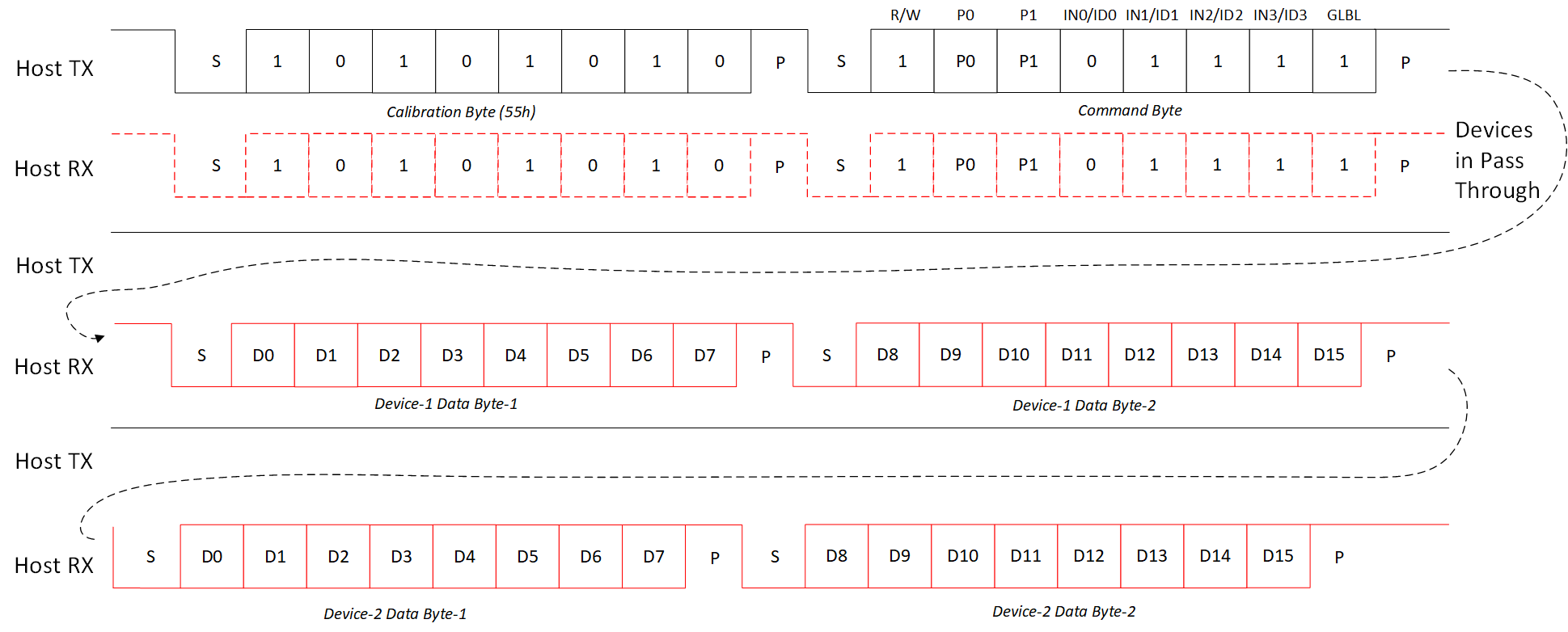SBOS891C October 2018 – September 2023 TMP144
PRODUCTION DATA
- 1
- 1 Features
- 2 Applications
- 3 Description
- 4 Revision History
- 5 Pin Configuration and Functions
- 6 Specifications
- 7 Detailed Description
- 8 Application and Implementation
- 9 Device and Documentation Support
- 10Mechanical, Packaging, and Orderable Information
Package Options
Refer to the PDF data sheet for device specific package drawings
Mechanical Data (Package|Pins)
- YBK|4
- YFF|4
- YMT|4
Thermal pad, mechanical data (Package|Pins)
Orderable Information
7.5.5 Global Read and Write
The host can initiate a global read or write command to all TMP144s in the daisy-chain by sending the read/write command, consisting of C[7:3] = 11110 and C[2:1] to indicate the data register pointer P[1:0], as shown in Table 7-3. A global write command is indicated by C[0] = 0. The host must transfer at least one more byte of data for the register, and every TMP144 in the daisy-chain updates the appropriate register as shown in Figure 7-12.
 Figure 7-12 Global Write Command
Flow.
Figure 7-12 Global Write Command
Flow.
 Figure 7-13 Global Read Command
Flow.
Figure 7-13 Global Read Command
Flow. Table 7-3 Pointer Addresses
| P1 | P0 | REGISTER |
|---|---|---|
| 0 | 0 | Temperature register (read-only) |
| 0 | 1 | Configuration register (read/write) |
| 1 | 0 | TLOW register (read/write) |
| 1 | 1 | THIGH register (read/write) |